Japan's hot spring prefecture bets big on geothermal energy
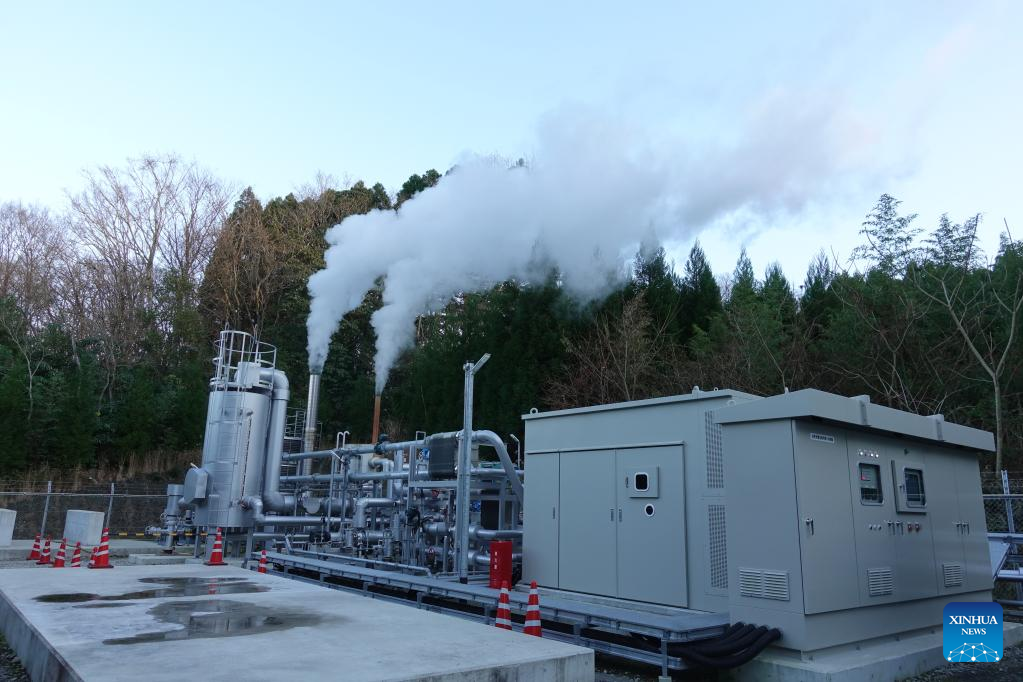
This photo taken on Dec. 9, 2022 shows a test plant for producing hydrogen using geothermal energy in Kokonoemachi, Oita Prefecture, Japan.(Xinhua/Zhang Yiyi)
TOKYO, Dec. 11 (Xinhua) -- Japan's hot spring prefecture of Oita is going full steam ahead in developing geothermal energy, as the country aims to go carbon neutral by 2050.
Geothermal power, considered a stable and non-emitting power source, now occupies only a tiny share of the country's energy mix. Although Japan's amount of geothermal resources ranks third globally with about 23.47 million kilowatts, the actual capacity of its geothermal generation facilities is only 610,000 kilowatts, putting it eighth in the world.
To achieve carbon neutrality in 2050, the Japanese government has targeted increasing geothermal generation by 2.5 times to 1.48 kilowatts in 2030, amid faster steps to decarbonize its power sector.
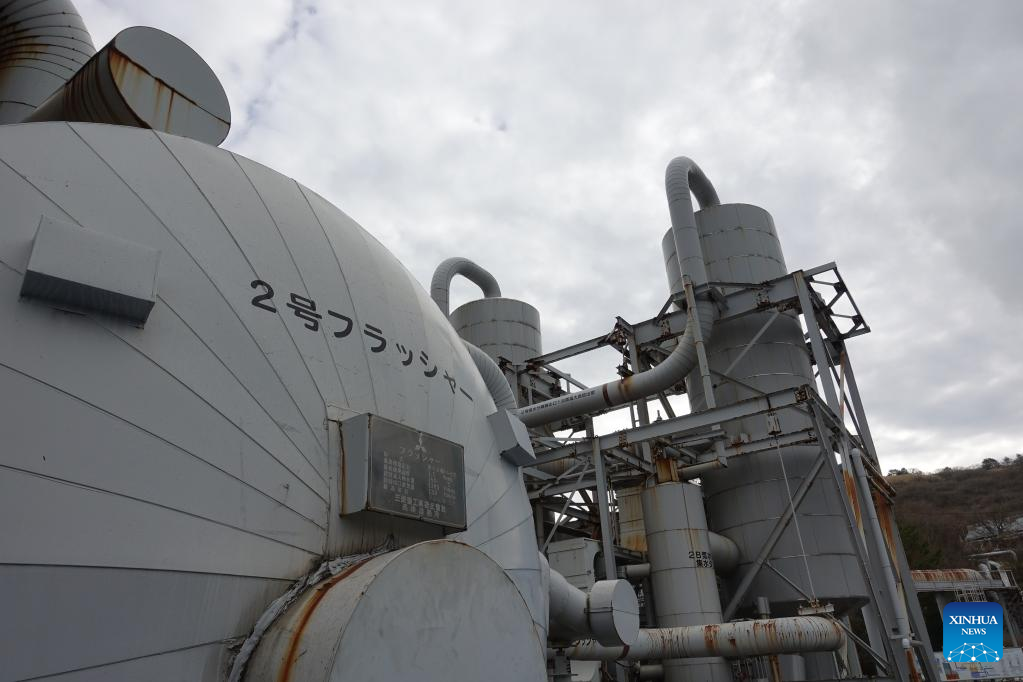
This photo taken on Dec. 9, 2022 shows the Hatchobaru Geothermal Power Station of Kyushu Electric Power Company, the largest geothermal power plant in Japan with a total installed capacity of 110,000 kilowatts, in Oita Prefecture, Japan. (Xinhua/Zhang Yiyi)
Home to several hot springs, Oita boasts high potential as a center for geothermal power, currently producing about 40 percent of the country's geothermal power, the highest amount among all Japanese prefectures.
Located on the eastern coast of Kyushu, the region's carbon dioxide emission to gross prefectural domestic product, on the other hand, ranks highest in the country as a manufacturing center of automobiles, semiconductors and precision machinery, with the only petrochemical complex in Kyushu.
"We will reduce carbon emission stage by stage," said Katsusada Hirose, governor of Oita Prefecture, noting that the region now ranks second in the country with its renewable energy self-efficiency rate at 50 percent, just after Akita Prefecture, and is making efforts to develop geothermal power and take advantage of hydrogen gas to electrify industry.
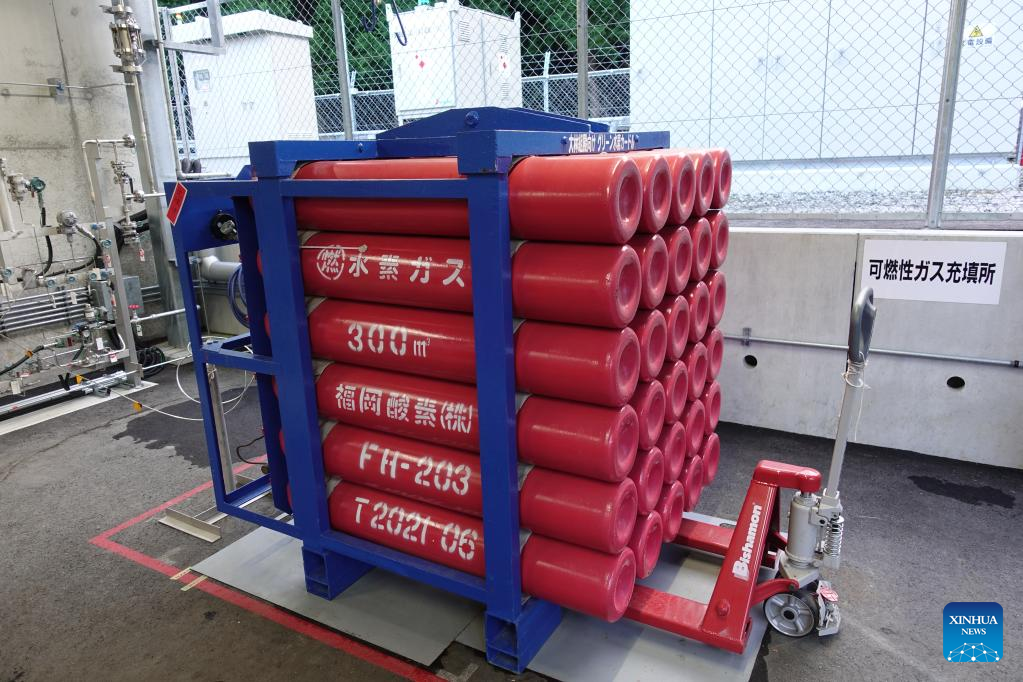
This photo taken on Dec. 9, 2022 shows a hydrogen cylinder bundle at a test plant for producing hydrogen using geothermal energy in Kokonoemachi, Oita Prefecture, Japan. (Xinhua/Zhang Yiyi)
In Oita, local geothermal power plants are striving to advance energy efficiency, such as the Hatchobaru Geothermal Power Station of Kyushu Electric Power Company, the largest geothermal power plant in Japan with a total installed capacity of 110,000 kilowatts, equal to the power used by about 37,000 households. Its double flash system, which separates steam and hot water before once again extracting steam from the separated hot water, has increased the output by up to 25 percent.
"The system at the company's Otake Geothermal Power Station will be renovated, which is expected to achieve 20 percent greater power generation," said Onoda Hirofumi with the company.
In line with Japan's goal to achieve carbon neutrality in 2050, Japanese Prime Minister Fumio Kishida announced a Green Transformation plan to have renewable energy sources provide up to 38 percent of Japan's total energy by 2030.
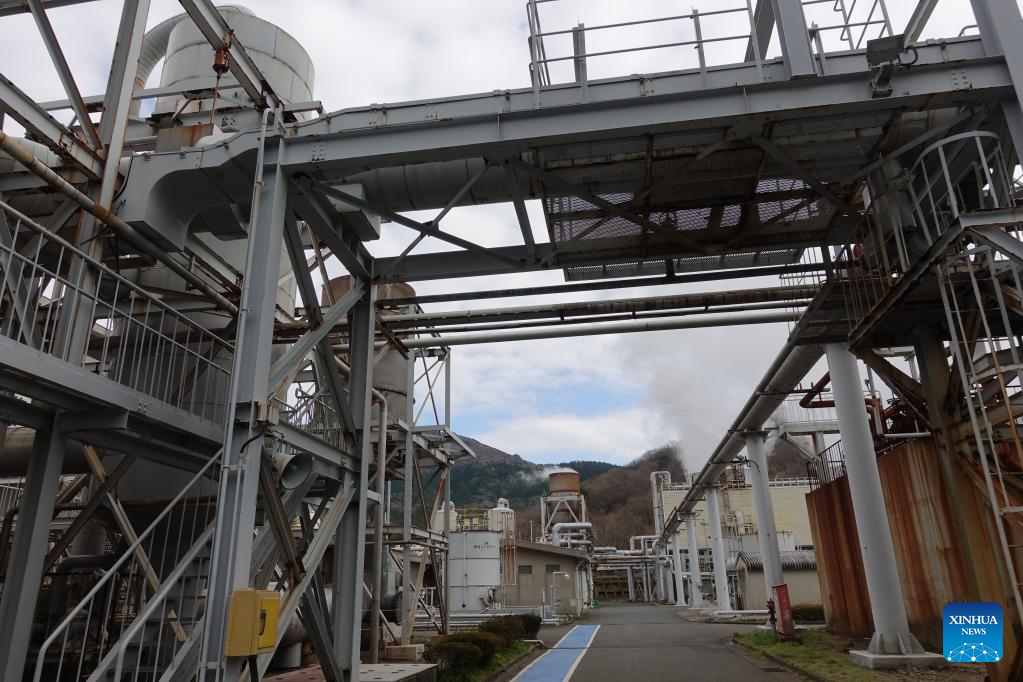
This photo taken on Dec. 9, 2022 shows the Hatchobaru Geothermal Power Station of Kyushu Electric Power Company, the largest geothermal power plant in Japan with a total installed capacity of 110,000 kilowatts, in Oita Prefecture, Japan. (Xinhua/Zhang Yiyi)
To achieve such a goal, more ambitious steps must be taken to increase geothermal power generation in regions such as Oita, but local community members and even tourism bodies have raised concerns.
Many tourist sites in Oita, such as Beppu, feature the Japanese culture of Onsen, or hot springs, and are still expecting to recover after being devastated by the COVID-19 pandemic. Local Onsen owners are highly concerned that more geothermal power plants would dry up hot spring water, although electric power companies insist that the drilling depths for hot spring waters and heat sources of geothermal power are entirely different.
Besides opposition from local Onsen businesses, legal restrictions and lengthy monitoring surveys are also behind the lagging steps of geothermal growth, according to Hirofumi.

This photo taken on Dec. 9, 2022 shows a hot spring facility in Taketa City, Oita Prefecture, Japan. (Xinhua/Zhang Yiyi)
In another attempt to explore geothermal's potential, a test plant for producing hydrogen using geothermal energy, the first of its kind in Japan, was built by Obayashi Corporation in Kokonoemachi, Oita Prefecture, operating from July 2021 to March 2024. The hydrogen is produced and consumed locally in Kyushu.
Such green hydrogen production now faces concerns, including high shipment costs to major energy-consuming centers and infrastructure yet to be improved, said Hitoshi Nagatsugu, a deputy manager under the construction firm's green energy division.
According to McKinsey &Company, Japan will need 22 million tons of hydrogen annually by 2050, up significantly from the less than two million tons required today.
There is also growing criticism from local experts that Kishida's green plan relies too much on future technological developments at a time when immediate and serious steps are needed to tackle climate change.
Photos
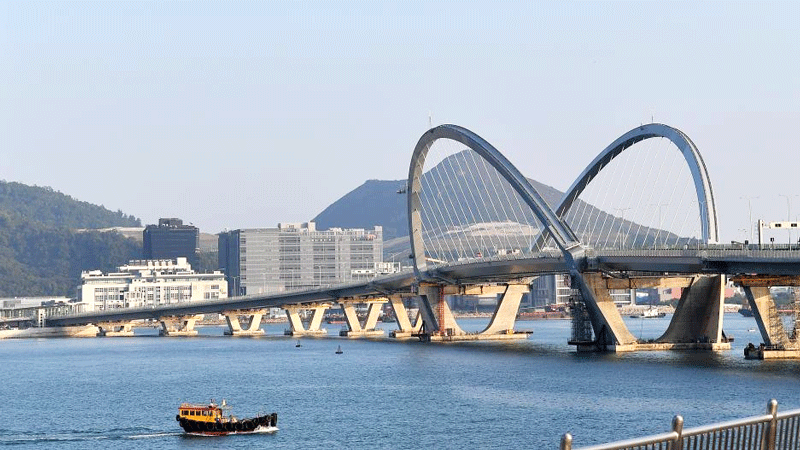 Hong Kong's Tseung Kwan O Cross Bay Bridge opens to traffic
Hong Kong's Tseung Kwan O Cross Bay Bridge opens to traffic Mountain range seen from Kathmandu Valley
Mountain range seen from Kathmandu Valley Egypt sees increasing number of tourists at archaeological sites
Egypt sees increasing number of tourists at archaeological sites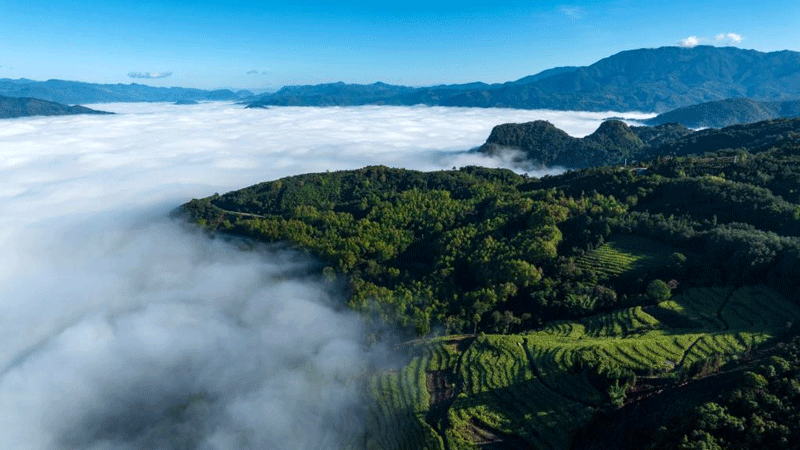 Sea of clouds in Lincang City of SW China's Yunnan
Sea of clouds in Lincang City of SW China's Yunnan
Related Stories
- China Focus: Coal base ramps up energy supply for winter needs
- Japan logs 1st current account deficit in 9 months in October
- Japan gov't alerts farmers as bird flu cases increase
- China releases catalogue promoting energy-saving technology application
- Japan to postpone tax hike for funding higher defense spending
- "Energy Valley" in Beijing drives innovative development of energy industry
Copyright © 2022 People's Daily Online. All Rights Reserved.





